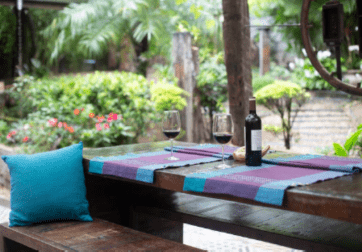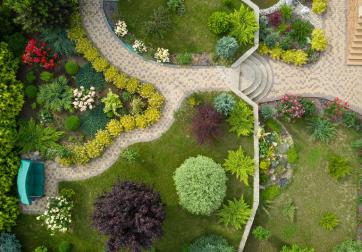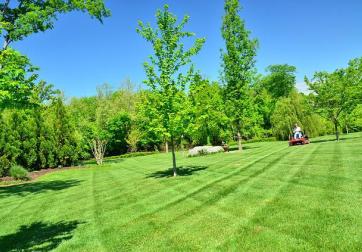LANDSCAPE DESIGN SUCCESS IN THE LANDSCAPE DEIGN PROCESS
Design is as individualistic as the person who does the design. Landscape design combines the elements of art and science to create a functional, aesthetically pleasing design, often acting as a link or an extension of indoor living to the outdoors. The elements and principles of design are the means through which a designer evaluates the effectiveness and success of a project. The elements and principles act as the tools and guidelines for developing the design.
One goal of landscape design is to blend the buildings into the natural surroundings. The elements of design (color, line, form, texture, and scale) are never used independently of each other. The elements (unity, balance, transition, focalization, proportion, rhythm, repetition, and simplicity) are the tools used in combination to adjust the design principles. These principles interact to create the intended design.
First, visualize your design to scale on paper. It is important to think with drawings and sketches so your mistakes are made on paper, not in reality on the landscape site. Remember the adage: “Measure twice, cut once!” The steps in developing a design are cyclical; re-visit the completed steps as you move through the process to insure that the completed design actually adheres to the original design intent or are accurately modified to reflect the changes dictated by the analysis/process and program changes. The steps in developing a landscape design are:
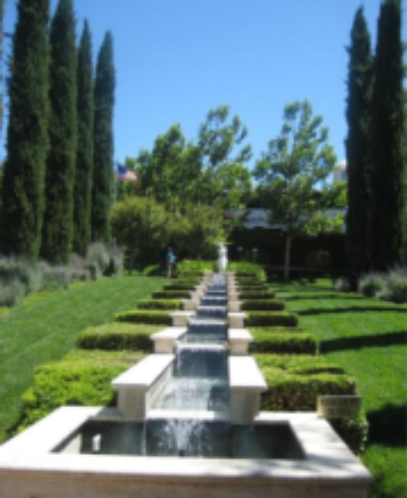
Formal bilateral sysmmetry: Design is as individualistic as the person who does the design.
Consider balance or imbalance. Imbalance is uncomfortable & not desirable.
• Symmetrical balance (Formal & has bi-lateral symmetry or is identical on each side)
• Asymmetrical balance (Informal & has equal weights on each side, but is not exactly the same)
• Radial balance
(Works in a circular pattern from a center point)
Order and Unity
Order and unity are both emotional and visual reactions to the overall organization of the design elements within the existing site conditions. It is the organization and structure of a design, acting as the basic scheme or “skeleton” of the design. Order could be achieved by symmetrical or asymmetrical balance or by having a formal or natural arrangement.
1. Develop a plot plan
2. Conduct a site analysis
3. Assess client/owner needs and wishes
4. Locate activity areas
5. Design activity areas
6. Design planting (selection & placement of materials)
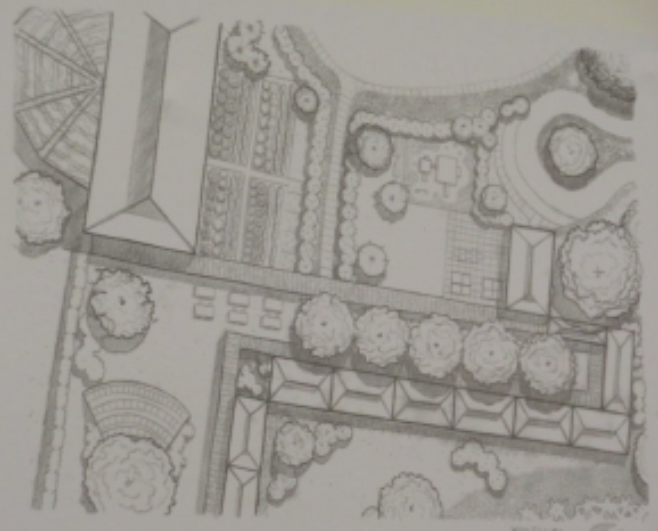
A systematic approach should be taken in landscape design. First, determine the objective of your design and then establish the general type of plan, whether it should be formal or natural.

Natural Design: Addressing the Design Requirements; Consider landforms—slopes, erosion, flat areas, cliffs.
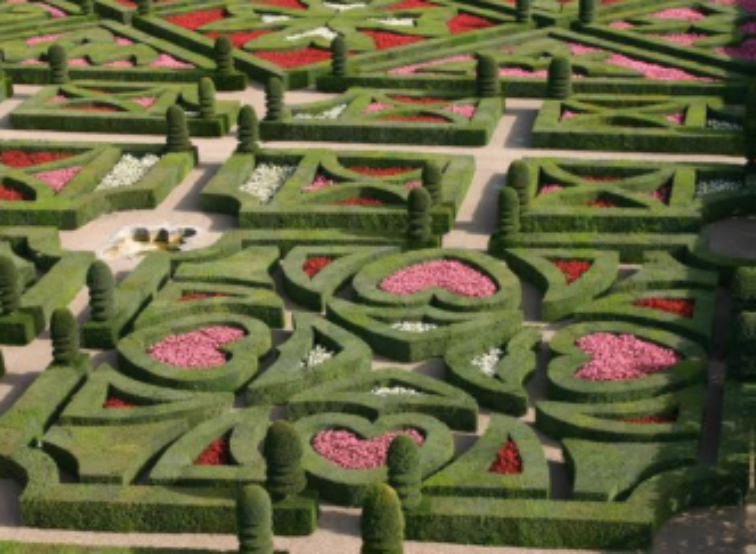
Formal garden of the Château de Villandry. First, determine the objective of your design and then establish the general type of plan, whether it should be formal or natural.
Unity is the harmonious relationship among all the elements and characteristics of a design, established by staying simple and minimizing differences. Too many components and materials, and the complex use of elements, create competitiveness and the resulting lack of integration within the design prevents unity.
Address the Design Requirements
1. Plan for structural needs (buildings and their uses)
2. Consider landforms (slopes, erosion, flat areas, cliffs)
3. Determine traffic flow (vehicular, service, pe- destrian, entrance, parking; include transitions and linkages)

A private area might be designed for reading or meditation next to a hedge or building or in an isolated corner of the landscape under a canopy of trees.
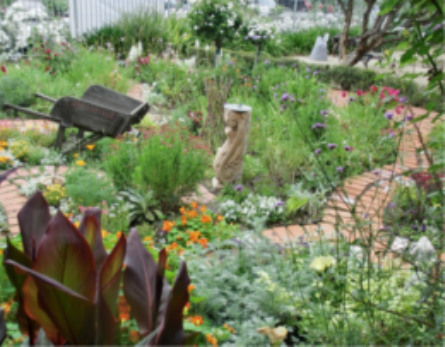
Bottom: A Circulation Path: One goal of landscape design is to blend the buildings into the natural surroundings. Top: Using the basic principles of landscape design will ensure the creation of a functional and beautiful garden and landscape.

4. Consider the public
area (which is different from the client’s needs), including:
5. Adjacencies to other properties (screening or en- hancing views)
6. Entrance area (including traffic flow, linking the outside
areas to the site)
7. Landscape face to neighbors
8. Comfortable access and “wayfinding” to the entrance
The design should consider areas with a feeling of privacy and comfort, as well as provide limited exposure for security. A private area might be designed for reading or meditation next to a hedge or building or in an isolated corner of the landscape under a canopy of trees.
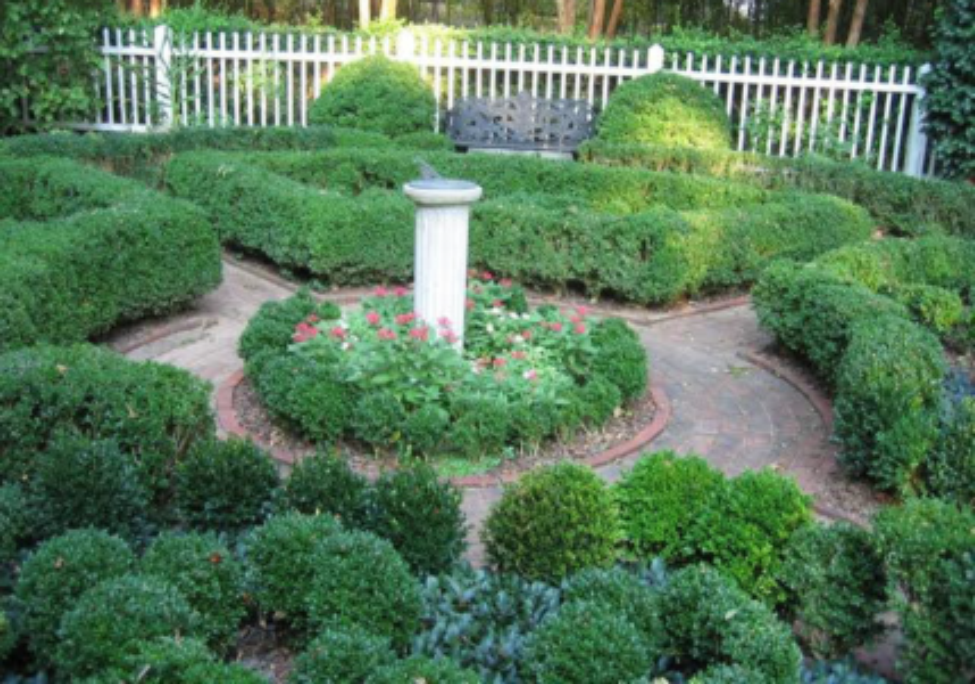
Radial Deign, Founders Memorial Garden, Athens, Georgia
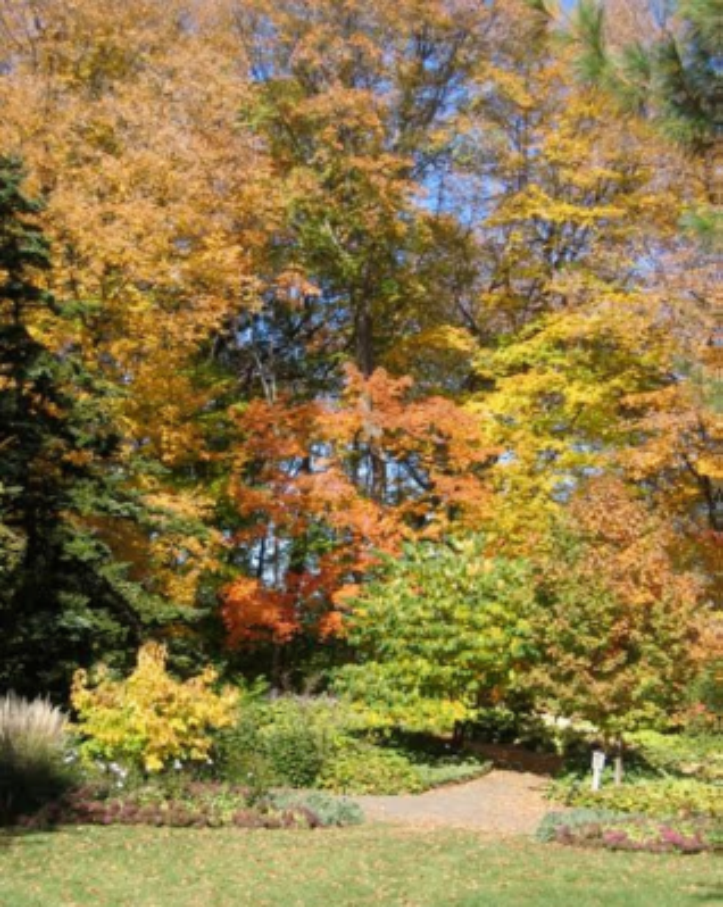
Traffic Flow and Circulation
When designing for traffic flow and circulation, each unit on the site should be part of the whole and contribute to the overall circulation pattern. Circulation also refers to the movement of peoples’ eyes (towards a focal point) with their bodies following through a specific pattern in the landscape.
Definition & Separation of Areas
A designer should clearly define and separate activity areas once the ideas for their design have been determined. Sometimes space between areas or objects acts in this manner, other times a fence or plant materials will do the job. Consider a visual screen that can be added without creating an actual physical barrier. Often plant materials can provide an inexpensive screen, adding both color and interest.
Summary
Remember, every designer creates a unique design based on his or her interpretation of the landscape design process. Using the basic principles of landscape design will ensure the creation of a functional and beautiful garden and landscape. One that can be enjoyed by all.
—Alexis Slafer, ASLA, is LDS Chairman,
California Garden Clubs, Inc.; NGC LDS Accrediting Chairman; and Contributing author of Stewards
--Articles and photos reprinted with permission by The National Gardener, Fall 2015

 Board Member Login
Board Member Login Our Store
Our Store Blog
Blog



